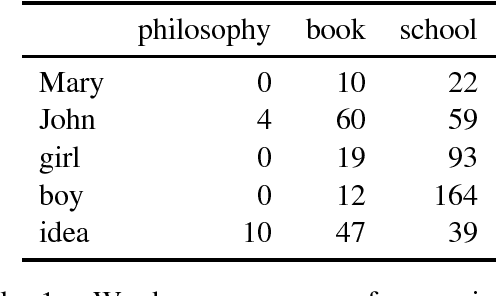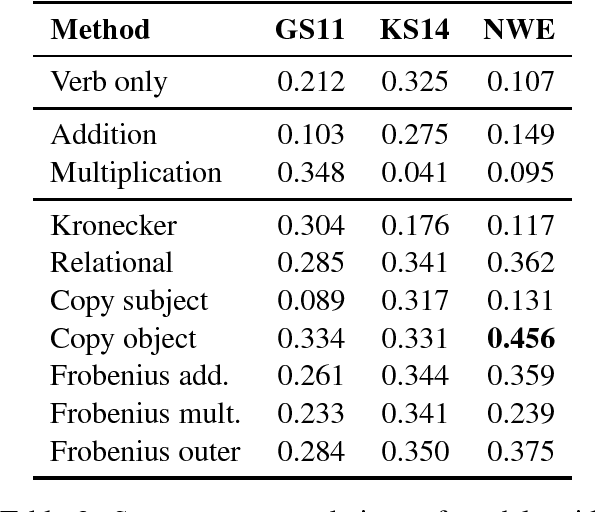Dmitrijs Milajevs
A Proposal for Linguistic Similarity Datasets Based on Commonality Lists
Jun 17, 2016Abstract:Similarity is a core notion that is used in psychology and two branches of linguistics: theoretical and computational. The similarity datasets that come from the two fields differ in design: psychological datasets are focused around a certain topic such as fruit names, while linguistic datasets contain words from various categories. The later makes humans assign low similarity scores to the words that have nothing in common and to the words that have contrast in meaning, making similarity scores ambiguous. In this work we discuss the similarity collection procedure for a multi-category dataset that avoids score ambiguity and suggest changes to the evaluation procedure to reflect the insights of psychological literature for word, phrase and sentence similarity. We suggest to ask humans to provide a list of commonalities and differences instead of numerical similarity scores and employ the structure of human judgements beyond pairwise similarity for model evaluation. We believe that the proposed approach will give rise to datasets that test meaning representation models more thoroughly with respect to the human treatment of similarity.
Evaluating Neural Word Representations in Tensor-Based Compositional Settings
Aug 26, 2014



Abstract:We provide a comparative study between neural word representations and traditional vector spaces based on co-occurrence counts, in a number of compositional tasks. We use three different semantic spaces and implement seven tensor-based compositional models, which we then test (together with simpler additive and multiplicative approaches) in tasks involving verb disambiguation and sentence similarity. To check their scalability, we additionally evaluate the spaces using simple compositional methods on larger-scale tasks with less constrained language: paraphrase detection and dialogue act tagging. In the more constrained tasks, co-occurrence vectors are competitive, although choice of compositional method is important; on the larger-scale tasks, they are outperformed by neural word embeddings, which show robust, stable performance across the tasks.
 Add to Chrome
Add to Chrome Add to Firefox
Add to Firefox Add to Edge
Add to Edge